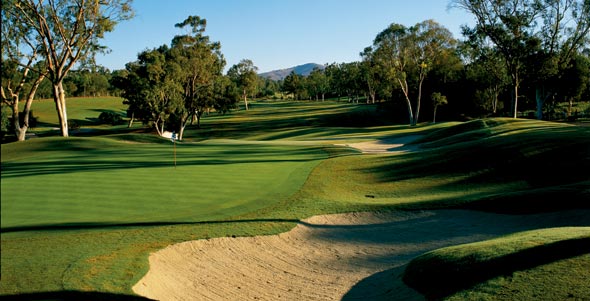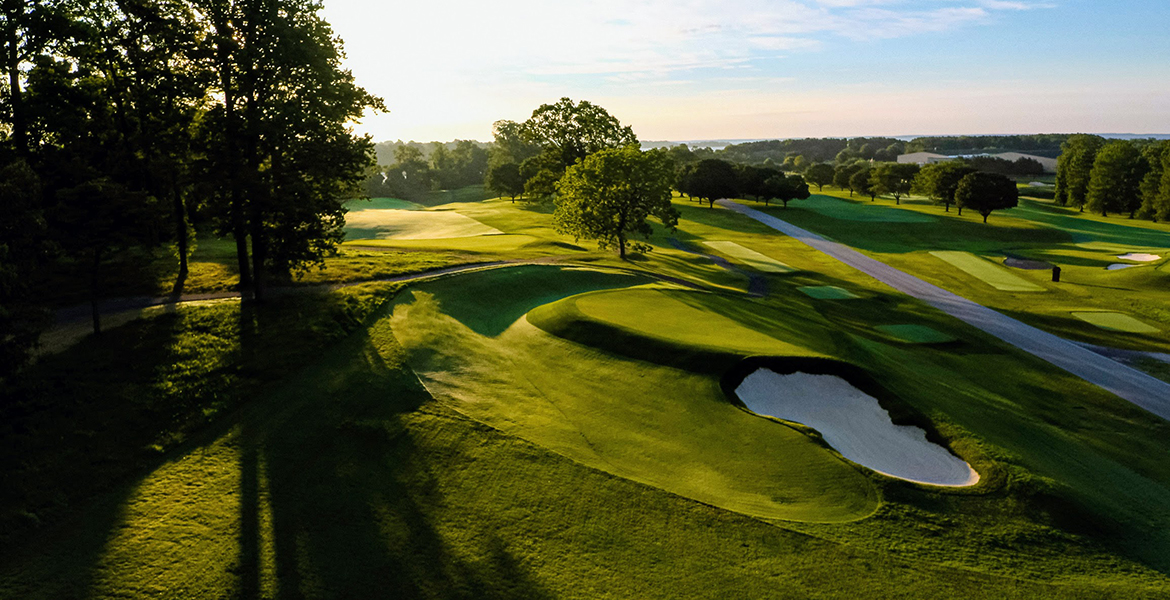
Amid the four-lane concrete highways of sprawling San Diego County, a commercial neighborhood ends by offering Encinitas Boulevard motorists a choice of narrow, winding roads. Veering right, the traveler starts down a winding lane shaded by sycamores and live oaks, seemingly headed for San Diego’s agricultural backcountry. But locals know this as the access road to one of the world’s wealthiest and most prestigious communities: Rancho Santa Fe.
An initial sight along the winding La Granada road is a rustic bridle path; then, beyond a split-rail fence, comes the back nine of Max Behr’s 1929 Rancho Santa Fe Golf Club design. Set gracefully into a valley floor with towering eucalyptus-lined fairways, the exclusive club has hosted friendly wagers, a San Diego Open and the original Crosby clambakes in its 70-plus years of existence.
One of the first planned communities in California, Rancho Santa Fe earned historical landmark status in 1989. To this day, the covenant retains significant control over architectural styles, home sizes and landscaping, setting the community apart from its less-restrictive neighbors and, not coincidentally, turning the covenant property into some of California’s most sought-after real estate.
In September 1927, Rancho Santa Fe “Country Club” was incorporated, and three months later architect Max Behr was hired. A Yale graduate and runner-up in the 1908 U.S. Amateur to Jerry Travers, Behr came from a wealthy East Coast family, devoting much of his life to writing about golf architecture and the Rules of Golf. An extensive collection of essays he wrote as editor of Golf Illustrated displays a vast knowledge of culture combined with a love for all sports. He believed courses shouldn’t turn to the restrictive boundaries of games like tennis or baseball. In particular, he despised hazards in the form of narrow, rough-lined fairways or penal bunkers that increased the element of luck and, in Behr’s always opinionated mind, reduced golf to “a species of trap shooting.”
Behr’s love for “native golf” drew him to Rancho Santa Fe’s idyllic setting, with its sage shrubbery, dry creeks and rolling swales shaped by rainwaters headed for La Orilla Creek, and ultimately to the Pacific. Many ground features were designed to camouflage earthworks needed to drain the valley, while complementing Behr’s minimalist fairway bunkering approach. Behr’s 6,700-yard, par-72 design opened June 5, 1929, with an honorary first foursome that included actor and golf aficionado Douglas Fairbanks Sr.
Rancho Santa Fe received its first official test in 1937 when Bing Crosby held a $3,000 pro-am. Anticipating a midwinter lark for the Nelsons, Mangrums and Sneads of the world, Crosby called the tournament a “clambake,” pairing celebrities and businessmen with professionals for a 36-hole event contested over a leisurely California weekend.
On several of the old pairing sheets, a faded correction is consistently penciled in: An “e” is replaced by an “a” in Sam Snead’s misspelled last name. Perhaps the typo spurred the 24-year old on, because he claimed the first two clambakes and their $500 first prizes. Due to Crosby’s popularity and devotion to his community, the clambake tradition quickly grew. Large galleries and media coverage helped the club attract new members during the Depression and throughout the equally lean World War II years. Thanks to “the Crosby” and the popularity of the course’s charismatic design, Rancho Santa Fe survived a difficult era during which a majority of Southern California clubs succumbed to insolvency.
Even though the San Diego version of the Crosby ended in 1943, when the beloved entertainer moved up the coast to a home on Pebble Beach’s 14th fairway, old-timers insist the tournament enjoyed its prime during those six years in Rancho Santa Fe. Their argument is hard to refute. After all, who wouldn’t love traveling that winding road to Southern California’s most idyllic inland enclave?






